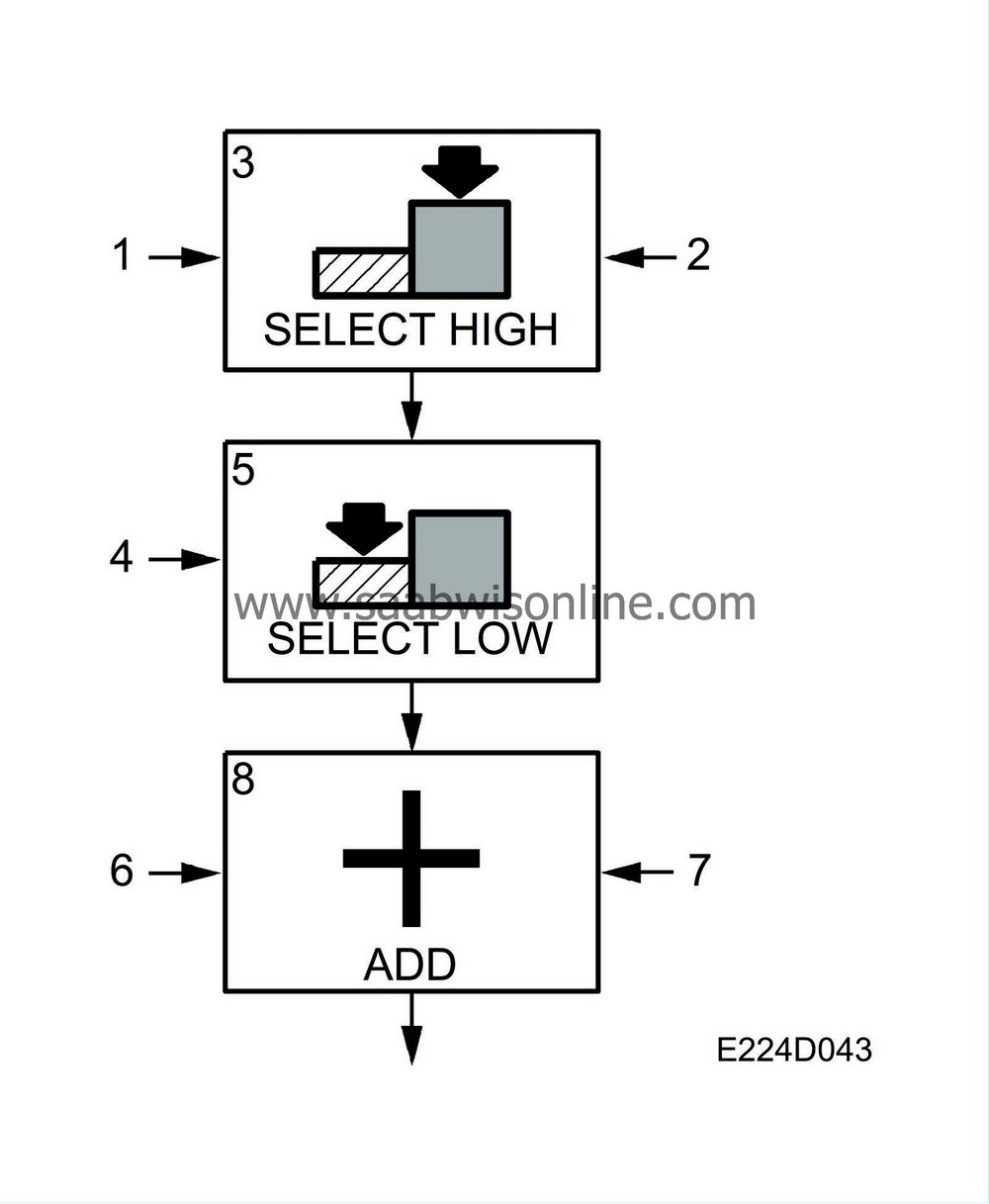Mass air flow control, basic function
| Mass air flow control, basic function |
| 1. |
Driver request
The control module reads pedal potentiometer 1 and converts the voltage into mass air flow/combustion (mg/c). The value is sent to box 3. |
|
| 2. |
Cruise control, request
When the cruise control is active, the mass air flow/combustion required to maintain the set speed is calculated. The value is sent to box 3. |
|
| 3. |
Select highest value
The control module selects the highest value. The value is sent to box 5. |
|
| 4. |
Torque limitation
The maximum permitted mass air flow/combustion varies according to the engine variant. When the car is being driven, the maximum permitted mass air flow/combustion is limited in first or reverse gear (manual gearbox), when the car is stationary and the brake pedal depressed (automatic gearbox), if knocking occurs, at the maximum permitted speed and at the maximum permitted engine rpm. External units, such as the automatic transmission, can also limit the maximum permitted mass air flow/combustion. This can also be limited if a system fault occurs. The control unit selects the lowest value. The value is sent to box 5. |
|
| 5. |
Select lowest value
The control module selects the lowest value and sends this to box 8. |
|
| 6. |
Compensation request
When the A/C compressor is turned on, and when the electrically heated rear window or radiator fan is on, the mass air flow/combustion required to compensate for the increased engine load is calculated. The value is sent to box 8. |
|
| 7. |
Other air request
The control module calculates the air mass/combustion required for idle speed control. The value is sent to box 8. |
|
| 8. |
Totalling of values
The control module totals all the values. The total is sent to box 9. |
|
| 9. |

|
|
| 10. |
Total system air request
This value is the system's total air request. The value is sent to box 10. |
|
| 11. |
Throttle control
The requested air mass/combustion is converted to requested voltage for throttle position sensor 1. The charge air pressure and intake air temperature are used to correct this conversion. The throttle motor rotates the throttle until the current voltage for throttle position sensor 1 corresponds with the requested voltage.
|
|||||||
| 12. |
Current mass air flow/combustion
The requested mass air flow/combustion is also compared with the current mass air flow/combustion (current MAF value/combustion). If necessary, the requested voltage is finely adjusted for throttle position sensor 1. |
|
| 13. |
Turbo control
If the requested air mass/combustion is too high to be handled by the throttle control alone, the turbo control will take over. The excess is converted to a PWM, which controls the charge air control valve. The absolute atmospheric pressure is used to correct this conversion. |
|
| 14. |
Current mass air flow/combustion
The requested air mass/combustion is compared with the current air mass/combustion and the charge air control valve PWM is finely adjusted if necessary. |
|
| Diagnostics |
Mass air flow/combustion is basically the same as engine torque. When carrying out fault diagnosis to determine the cause of poor performance, mass air flow control is therefore extremely important.
The diagnostic tool contains a special menu where relevant values can be displayed. The most important of these is the difference between requested and current mass air flow/combustion.
The current value should always, sometimes after a slight delay, follow the requested value. If this does not happen, a fault in the turbo function should be suspected. Faults in the throttle control are excluded as differences between the throttle position's actual and nominal values will put the throttle control into limp-home mode.



